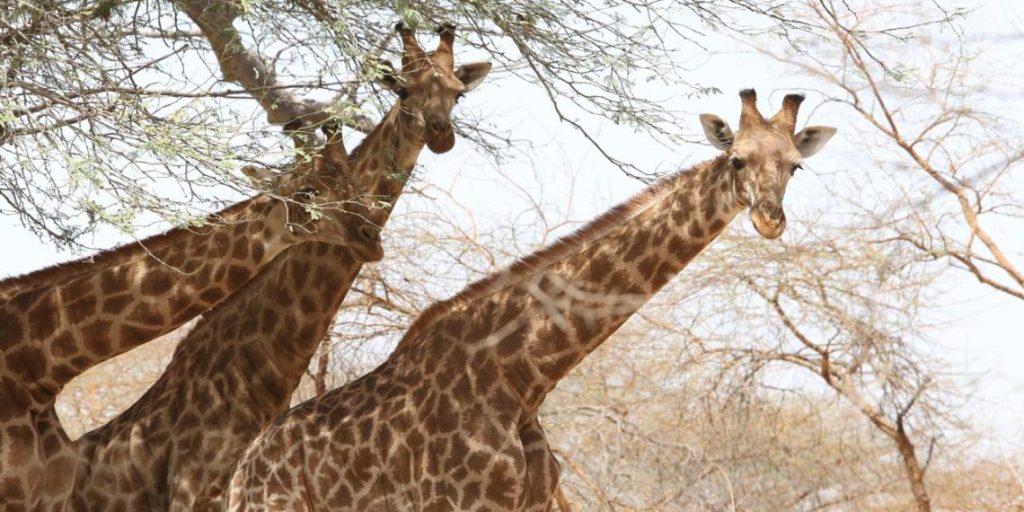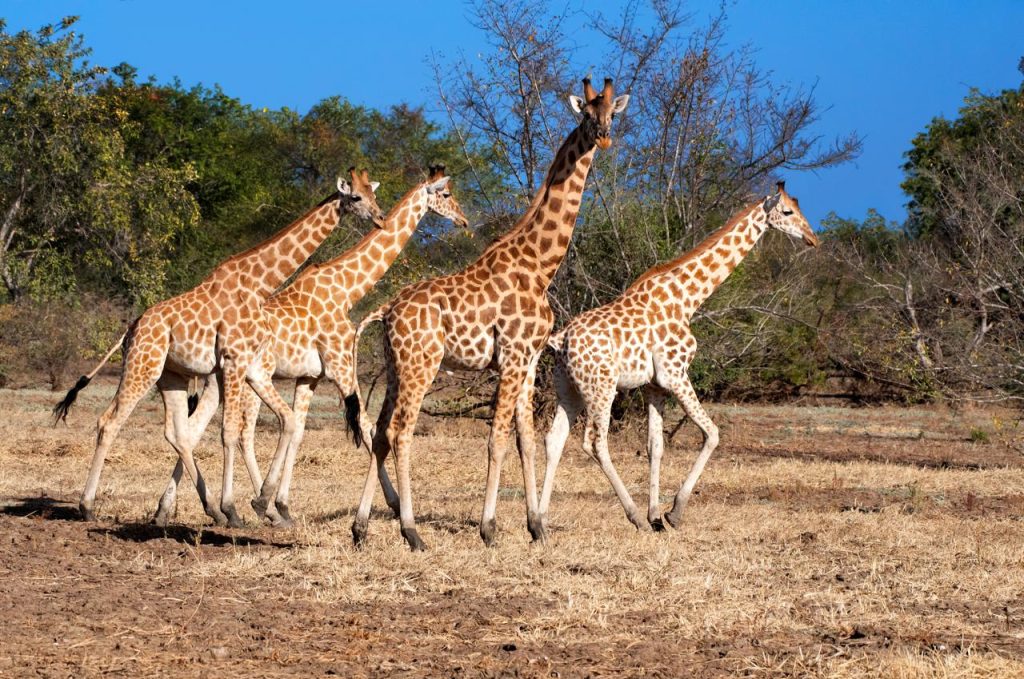
In Northern Cameroon, a rare giraffe subspecies still survives, the Kordofan giraffe.
Over the last few years, they have been disappearing but here in Cameroon, the Kordofan giraffes live in one of its last remaining habitat, The Faro National park.
These giraffes do more than stand out, they help keep the ecosystem healthy, an ecosystem that continues to benefit from their presence. As Kordofan giraffes feed, they shape vegetation and spread seeds, supporting plant growth and biodiversity across the park.
But their survival is far from assured.
Over the past 30 years, the Kordofan giraffe population has declined by more than 40%, mainly due to poaching and loss of habitat.
Many of them were hunted for their skin, bones, and tail hairs to be used in traditional ceremonies and crafts while others were displaced as people and cattle moved deeper into their habitat during seasonal migrations.
“Giraffe conservation today requires more than just protecting a species it demands that we rethink how we manage ecosystems under pressure,” says Dr. Philip Muruthi, Vice President, Species Conservation and Science at the African Wildlife Foundation (AWF). “The Kordofan giraffe, with its shrinking range and dwindling numbers, is a signal that the systems we rely on are under stress.”
A signal that prompted action
AWF partnered with Cameroon’s Ministry of Forestry and Wildlife (MINFOF) to carry out a conservation program in Faro National Park. With support from the European Union and other donors, the key focus was tracking the giraffe populations, restoring key habitats through science based monitoring and working closely with the local conservation leaders and the eco-guards.
From increased patrols of the local eco-guards to better monitoring tools like camera traps. The numbers continue to tell a story, the impact of the work is visible.
In 2021, Kordofan giraffes were spotted in only a few locations. Two years later, in 2023, 21 Giraffes were identified across a larger area of the Faro National Park.
“Every giraffe we identify is a sign that protection is possible when the people closest to the problem are also part of the solution,” says Anthony Agbor, AWF’s Faro Landscape Director. “We’re not managing wildlife in isolation; we’re managing a future for this landscape.”
With males reaching up to 18 feet, giraffes are the tallest land animals on Earth. They may tower above the trees, but even their height cannot shield them from the challenges they face on the ground.
In places like Faro, their survival depends not on how tall they are, but on the people working to protect them. Scientists, rangers, eco-guards, local leaders, and conservation partners all continue to play a role in securing a future for these giraffes.

Kordofan Giraffes in the Faro National Park
A continent-wide strategy
From Kenya’s Tsavo landscape to Tanzania’s Maasai Steppe, AWF is working with national task forces and international partners to strengthen giraffe conservation across the continent. Through a comprehensive strategy focused on habitat protection, anti-poaching, community engagement, research, and policy support, AWF has already helped secure critical habitats for over 24% of Africa’s remaining giraffes, with a goal of reaching 82% by 2030.
At the heart of AWF’s work is community involvement, empowering people living near protected areas by training wildlife scouts and monitors, supporting education programs, and expanding public awareness about the importance of conservation.
“The story of the Kordofan giraffe in Faro is not just one of survival, it’s about rebuilding trust between people, wildlife, and the land,” says Agbor. “These giraffes have managed to persist in a challenging landscape shaped by transhumance, poaching, and limited resources. Our progress didn’t come from chance; it came from sustained presence, consistent monitoring, and local partnerships that respect both ecological needs and community realities.”
Still, the road ahead remains uncertain.
“What’s happening in Faro is encouraging, but it also reminds us that recovery is fragile without long-term investment and policy coherence across Africa’s giraffe range states,” notes Dr. Philip Muruthi, AWF’s Vice President for Species Conservation and Science.
So today, On World Giraffe Day, let us take a moment to think about the Kordofan giraffe.
Let us acknowledge the progress made in places like Faro and remember that protecting giraffes means protecting something bigger.
It means preserving the ecosystems they support and the communities that live alongside them.
Back home in Zimbabwe all the giraffes are identified as South African giraffes (Giraffa giraffa giraffa), a subspecies of the Southern giraffe.
The Giraffe numbers have decreased by more than 50% in some areas over the past few decades, but populations in private conservancies are increasing.
Efforts by the Giraffe Conservation Foundation (GCF) and Zimbabwe Parks and Wildlife Management Authority (ZimParks) are actively involved in giraffe conservation, including research, monitoring, and translocation projects. This led to the successful translocation of, 70 giraffes in 2024 from southern Zimbabwe to a conservancy near Hwange National Park to boost the local giraffe population.
While hunting for Giraffe is permitted under national quotas, it is associated with tight permit controls, particularly in well-managed hunting blocks.
Hwange National Park is a prime location for spotting giraffes, along with other wildlife like elephants, lions, and zebras. Other areas include Zambezi National Park, Victoria Falls Private Game Reserve, and Mosi-oa-Tunya National Park.
